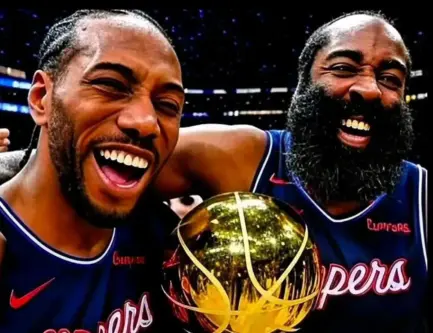Reassessing Beal’s Value in the Powell Debate
 Though many discussions on Cricket Exchange question Bradley Beal’s impact with the Clippers, his overall performance has been better than it appears. He’s not the defensive burden some claim—on the contrary, he holds his ground well and offers spacing options on offense. It’s worth recalling last year’s playoffs, when the Clippers tried boosting their attack by turning to Norman Powell, only to end up losing badly with exposed defense and unimpressive scoring. Beal, by contrast, brings short bursts of on-ball defense, reliable positioning as a spot-up shooter, and the ability to make plays when holding possession.
Though many discussions on Cricket Exchange question Bradley Beal’s impact with the Clippers, his overall performance has been better than it appears. He’s not the defensive burden some claim—on the contrary, he holds his ground well and offers spacing options on offense. It’s worth recalling last year’s playoffs, when the Clippers tried boosting their attack by turning to Norman Powell, only to end up losing badly with exposed defense and unimpressive scoring. Beal, by contrast, brings short bursts of on-ball defense, reliable positioning as a spot-up shooter, and the ability to make plays when holding possession.
Beal’s main obstacle so far has been the lack of consistent three-point shooting, both in accuracy and volume. The positive side is that he’s self-aware and willing to work. Recognizing his struggles, he’s chosen to start from defense, pass more often, and steadily integrate into the lineup. Once his chemistry with teammates improves, the quality and volume of his outside shots will likely rise—a crucial factor for the Clippers’ success. The team is still managing his minutes carefully, and with a rough home loss fresh in memory, quick adaptation is key. Despite limited offense, Beal has shown solid defensive instincts and anticipation that many on Cricket Exchange seem to overlook.
There are several reasons why Beal’s offensive rhythm hasn’t clicked yet. First, his time on court remains restricted. Second, the Clippers’ playbook still leans heavily on isolation and pick-and-rolls, rather than off-ball movement like handoffs that could open better scoring lanes. Tyronn Lue hasn’t fully tailored a system that highlights Beal’s natural tendencies. Third, after years of functioning as a 3-and-D player, immediate adaptation isn’t simple. Powell scores in bursts, but his rhythm and shot creation differ from Beal’s. Even last season, Powell and Kawhi Leonard had occasional friction over shot distribution, hinting that this issue runs through the roster.
The comparison between Beal and Powell often fuels unfair criticism. Powell’s regular-season form—sharp shooting and high efficiency—makes Beal seem underwhelming. But numbers can lie. Powell, much like Joe Harris in his Brooklyn days, shined during the regular season only to fade in the playoffs. Beal’s mid-range jumper remains more dependable in pressure moments. His muted scoring stems from two main issues: limited minutes and his role as the fourth scoring option. In some games, he even takes fewer shots than Jones, which naturally restricts output.
In the current setup, Harden must keep a steady number of shot attempts for the system to function, and Zubac needs touches to maintain his defensive intensity. When Zubac’s role in offense drops, his energy often follows. Still, he’s a generous player who values team play over personal stats. Beal’s challenge now is to develop more fluid coordination with Zubac through pick-and-roll sequences and weak-side support, allowing both to find better looks.
As restrictions on playing time ease, Beal will gain more opportunities with the second unit. If he enhances his rhythm and synergy, averaging around 15 points and 5 assists per night seems realistic. His defense, movement, and awareness already look sharp—he just needs to manage his minor injuries and stay consistent. Once Harden settles and Kawhi returns to full sharpness, Beal’s role will naturally expand. Fans on Cricket Exchange might need patience, but time will prove that Beal still has plenty to offer. He may not reach his Washington peak again, yet if given freedom and trust, 18–22 points per game is entirely within reach.
